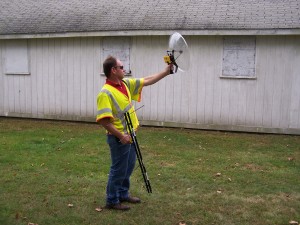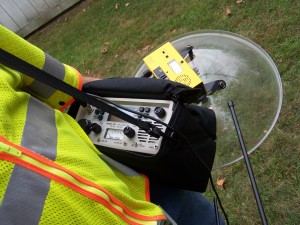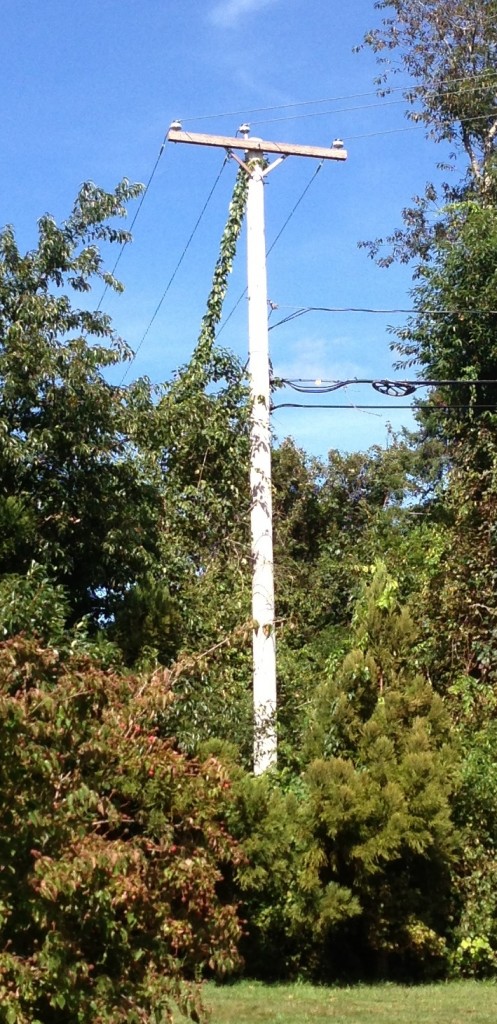Kurt, an RFI engineer from National Grid, met John, WA1ABI, at Portsmouth’s Glen Park on Friday, September 27 to investigate the RFI issue we previously identified in our RFI hunt at the site. Kurt was armed with a Radar Engineers Model 242 RFI locator receiver and a Radar Engineers Model 250 ultrasonic pinpoint locator. (See photos) The Model 242 locator receiver is an AM receiver covering 500 KHz through 1.0 GHz. Kurt used the 242 receiver in conjunction with a handheld VHF/UHF log periodic antenna. The Model 250 is an ultrasonic detector mounted in a clear parabolic dish equipped with a gun sight. This expensive professional grade RFI locating equipment is not too different from the amateur-grade equipment we used in our amateur RFI hunt two weeks ago.
Although Kurt is a seasoned RFI specialist and he was using designed-for-purpose professional equipment, his RFI location results were very much like ours. He experienced the same inconclusive results when using the 242 RF receiver and directional antenna. The 250 ultrasonic detector led him to the same pole we identified in our amateur RFI hunt. Once again, the loudest noise signature was heard coming from the pine tree adjacent to the suspect pole! Kurt’s best guess was similar to our amateur hypothesis – the ivy growing up the guy and onto the crossarm is probably involved in the RFI equation. The lesson here is that at least some of the time Amateur radio operators can achieve good RFI location results using simple equipment.
Kurt will schedule a line crew next week to service the entire line that runs through Glen Park. He plans to work alongside the line crew to monitor RFI levels. After they clean up the suspect pole, they will then sweep the entire line again to identify and repair any additional noise sources. Kurt promised to keep John informed of the outcome of their repair work.



